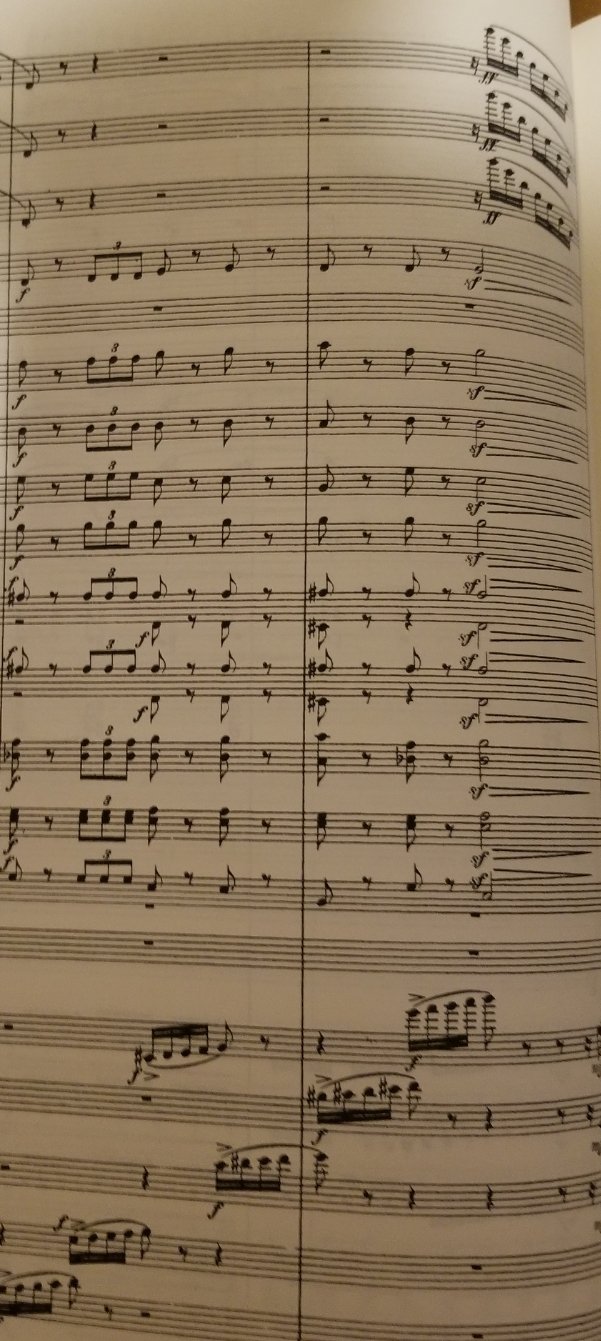Hello everyone! Welcome to part 3 of my Christmas analysis series. If you have missed any of the previous articles, they will be linked at the bottom. For those of you who are new to the fold, this is a new series in which I analyze the festive works of Handel and Tchaikovsky. Today's article will be about the second piece in Tchaikovsky's Nutcracker Suite: the March.
Analysis
Let's get into the analysis!
Form
First, I will discuss form. This piece's form really isn't complicated at all. It utilizes a traditional march form which is an A section, a B section, a repeat of the A section, and a trio section.
I first observed that there is an A section in G major
One thing notable about this A section is the voice exchange which occurs between the soprano and bass on beats 2 and 3 of measure 5. I neglected to highlight this.
I then observed the B section ( which occurs after the A section repeats leading to a V of e minor instead of a V of G). This B section's material stems from the material of the A section:
I highlighted the voice exchange which occurs between the soprano and Bass in pink this time.
After the B section, the A section repeats leading to a final cadence on G major.
After this repeat of the A section, we get "the world's shortest trio" as my piano teacher called it. This trio consists of entirely new material in e minor. One thing which is interesting about this trio is that it does not once truly cadence thanks to the fact that it is all over a pedal point of i (highlighted in maroon).
After this trio, the entire A and B section repeats (with variations in the orchestrations). Ending on the G major cadence which had come before the trio the first time through.
Sequences
One thing which Tchaikovsky is known for is his use of sequences within his composition. This piece is no exception. You can observe right away sequences within measures 5 and 6. Measures 7 and 8 consist of even smaller sequences. It is notable how this strategy of having sequenced units become smaller builds excitement. (I.E. measure 5 and 6 are measure long sequences where as 7 and 8 are half-measure long sequences):
This is a strategy which I have observed very much in Tchaikovsky. I am convinced that this is one of the reasons why Tchaikovsky is so good at transitioning between sections and building excitement within these transitions.
Orchestration
The orchestration within this work is quite ingenious. I enjoy very much the pizzicato cellos and basses in the second half of the A section; as well as the use of different instruments for different themes. I think the first part of the primary theme of the march very much fits the character of the brass instruments while the second part very much fits the strings. I also was very pleased with the use of the flute for the trio theme. The trio material really is nicely tailored for woodwinds and strings, and creates a contrast with the brassy primary theme. I have discussed Tchaikovsky's ingenuity in regards to theme writing for the different instruments, and I really don't think it is a coincidence that these themes are so well tailored for their instruments.
Lastly, I am amazed by the orchestral run which is passed between the strings and the woodwinds on top of the first half of the primary theme (after the trio). Here is a picture of the orchestral parts (sadly it is not captured in the piano reduction):

This creates such an incredible effect and develops the material even further.
Harmonics
This piece is quite conventional in its use of harmony. Much of what occurs, I highlighted within the form. I will discuss the interesting use of the iii chord on beat one of measure two. I am quite fond of the sound world which this use of iii creates.
I discussed the b section pedal point. But I will say that I really enjoy the texture created by this pedal point. It makes each phrase end sound less complete, leaving us with a yearning for more.
For the analysis video:
The color pink represents a voice exchange and the color maroon represents a pedal point.
Previous Analyses
The Nutcracker Suite
Miniature Overture (12/4)
*March (12/6)
The Messiah
Overture (12/5)
Upcoming Analyses
Comfort Ye...Ev'ry Valley from Handel's Messiah (12/7)
Conclusion
Thanks for reading this! It is surprising how long these posts take. I have been copying the music for them since the summer, and it took me over an hour just to write this. I apologize if it does not encompass enough, but I have a lot to write and little time to write it. Please remember that I am always grateful for feedback! I understand that I may have made mistakes or that there may be a different method of approach for something. Please feel free to let me know your thoughts! Hopefully I will see you in tomorrow's article!

(Note) In order to encourage meaningful feedback on the platform, I will check comment trails of users who leave superficial comments (ie "Awesome post," or "Upvoted.") and will mute any users who exhibit a pattern of leaving "spammy" comments.


